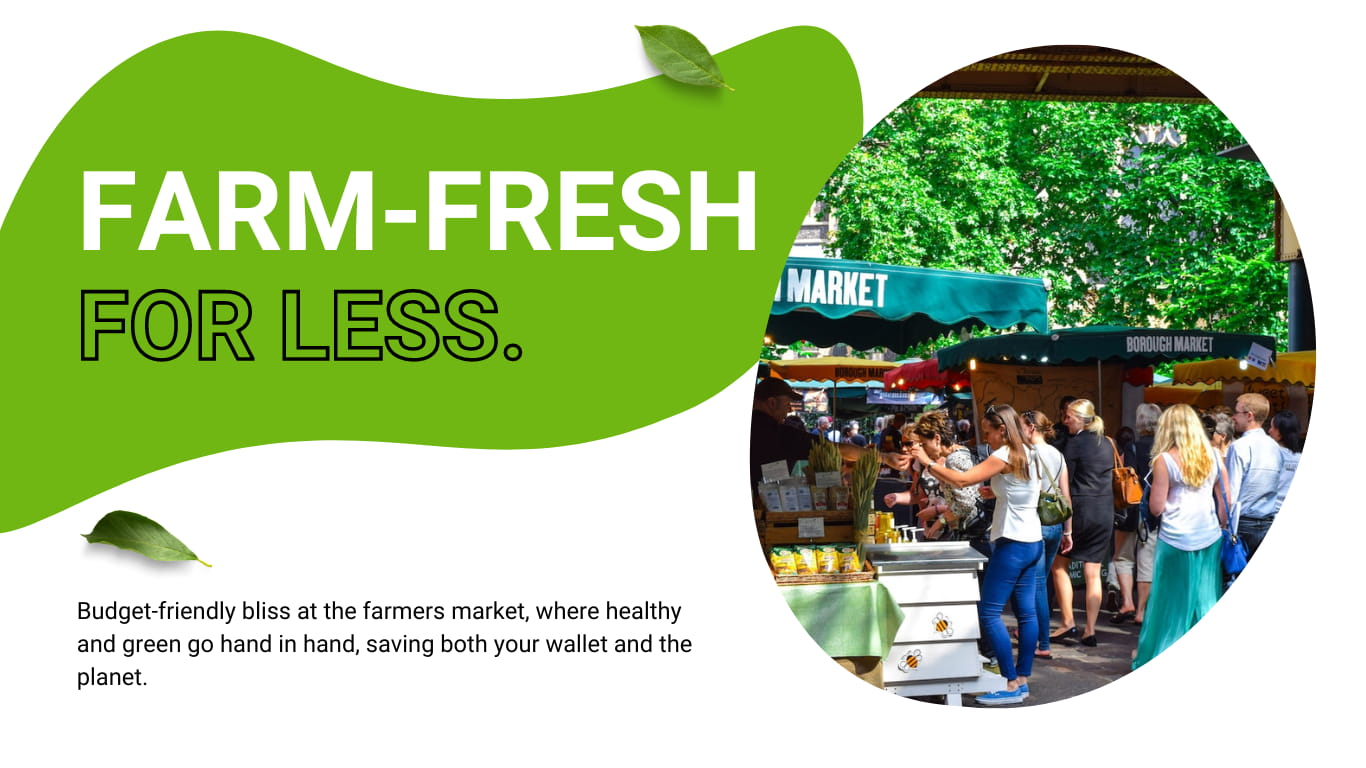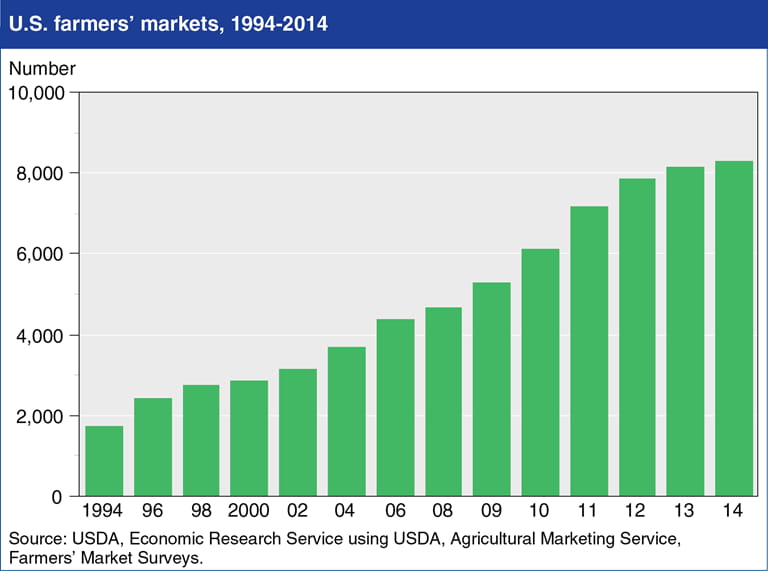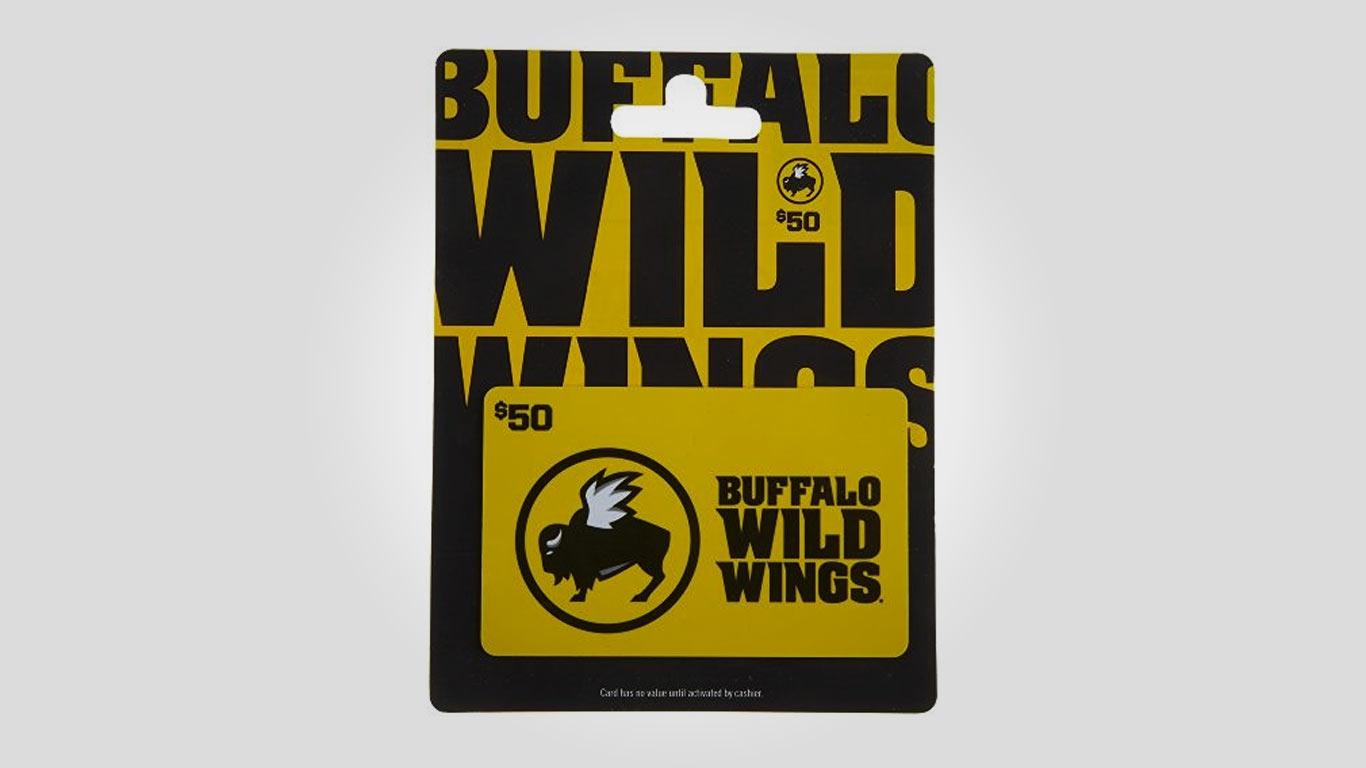
In a post-COVID world, inflation is a global problem that will not go away. People feel it the most while buying gas and paying rent.
However, it is also a big issue when it comes to grocery shopping. That is why more and more customers are searching for ideas to save money on their shopping lists.
Like with most things, it is impossible to tackle the problem without a concrete and solid plan. Keeping your grocery budget at a reasonable level means employing new tactics that might deliver better results.
One area that is gaining a decent amount of attention lately is the farmers market. However, the supporters of the market make that choice for different reasons.
The primary thing that comes to mind is the quality of the products. Healthy living is now on everyone’s mind, and the greener seems to be the better.
While the farmers market is obviously here to fill a significant void, the concept is still a real mystery to many. This is the case because there is a bit of misunderstanding regarding pricing.
Since the setting is different than what people are used to, many assume that it is more expensive to shop at a farmers market.
The real picture has more nuance, and there are ways to save money at a farmers market. There are some interesting tips that can help your bottom line.
However, before diving into those suggestions, it is essential to answer the question: What is a farmers market?
What is a Farmers Market?
A farmers market (Associated Press Stylebook) or farmer’s market (Cambridge Dictionary) is a place where farmers and those who work for them can sell their food directly to customers.
There are no clear rules for the location. It can be indoor or outdoor. It is an opportunity for consumers to buy locally and for producers to reach people who are looking for seasonal and tasty food.
Farmers need to follow specific guidelines in order to get a registration from the USDA Farmers Market Directory. Moreover, the producers need to be transparent about some standards, like the use of pesticides.
They also have to be open about what they mean by the tag “local.” There are close to 9,000 farmers markets in the United States. That number was under 2,000 in 1994.
Interestingly, a similar expansion is afoot in many of the top regions around the globe. In the past two decades, the sector gained a lot in terms of diversity.
The COVID pandemic accelerated this process because many customers felt safer shopping at the farmers market than at grocery stores. Some of the consumers have never looked back ever since.
In short, the farmers market brings a different experience to the table and is getting new converts regularly.
Are Farmers Markets Cheaper?
Since you are buying the food directly from the local producer, some say it should be cheaper. However, different factors do complicate the matter and blur the different lines.
So, is it cheaper to buy from a farmers market? There is not a simple and direct answer to this question. Many elements play in the pricing of groceries. The product that you are buying and your location are major factors.
It is hard to compare the price of apples in Florida versus New York. There is another element that needs to be taken into consideration.
You have to know what supermarkets or grocery stores that you are comparing the farmers market to because there are many differences between the top corporations.
Interestingly, local grocery stores tend to offer better prices than chains like whole foods. The budget at the farmers market may be slightly higher in some cases, but there are benefits to going that route.
Moreover, if you know what you are doing, it is possible to get really close to the concept of a cheap farmers market.
What are the Advantages of Buying From a Farmers Market?
There are benefits to shopping at a farmers market. One of the top advantages is the fact that you are giving local producers an outlet to sell their food directly to the consumer.
“When it comes to fresh fruit and vegetables, the shorter the time and distance from farm to sale, the higher the levels of vitamins and minerals” – Melinda E. Cater, MS, RD, LDN
There is no “middle man” in this setting. This works for farmers because they usually get less than 18 cents for every dollar spent on food in the country.
Secondly, patrons get seasonal and fresh products. It is easier to trace what they are eating, and the local economy reaps great rewards. Consumers can also talk directly with the farmers.
Third, the practice makes local agriculture more sustainable in the long run. Moreover, since shoppers tend to buy additional items, entire areas do become more viable economically.
Fourth, the consumers are endorsing healthier concepts. Some farms push more organic products, while others opt to put “low spray” or “no spray” on the food.
What are the Disadvantages of a Farmers Market?
There are not many disadvantages, but they do exist. For example, it is not always easy to stick with the local tag. Some farmers mix local food with produce grown elsewhere. This could be handled differently in terms of sustainability.
The products are not always as eco-friendly as they seem. Price could also be another issue for some consumers.
Thankfully, these nine tips can help you save money at the farmers market.
9 Ways to Save Money at a Farmers Market!
While farmers markets are constantly gaining in popularity, the larger public still has some questions about how they function. Inquiring minds want to have answers to questions like “How to save money at the farmers market?” and “Can you haggle at a farmers market?”
The following strategies will help clear some of the fog.
1. Go for “Seconds”
At some point in the day, some of the products are not in great shape. This might be your opening to get a great deal and buy them cheaper. Additionally, some farmers are not interested in leaving with those products.
Since the “seconds” are not always on display, you might have to ask the farmer if there are any available. Moreover, the producer might not always be familiar with such transactions, so it would not be a bad thing to have a price in mind.
Seconds tend to be “ugly,” however, they are still delicious. This is a simple way to save money at the farmers market.
2. Keep up With the Different Seasons
You are looking for affordability. It is important to know that some foods are cheaper at the peak of their season. When the crop is plentiful, the price will be at its lowest.
That is not all. These products are also in better shape, taste fantastic, and are more nutritious. Farmers are trying hard to reduce the intervals and disrupt the pattern.
“Produce from local farmers has spent more time on the vine, on the tree or in the ground, so you get better taste and more nutrients” – says Cater
However, seasonality is still a thing, and it can become an advantage in a major way. There is a free app, Localvore Passport, which helps track the information for your area.
However, the pen-and-paper method is enough for most consumers.
3. Go Bulk or With a Friend
Farmers work hard, and their products are priced accordingly. However, they really want to make their customers happy, so discounts are always on the table.
You can bargain at the farmers market, but it cannot be done in a way that is not respectful of the farmers’ efforts. So buying in bulk serves as a form of compromise.
You get great discounts, and the farmer is adequately compensated. Going to the farmers market with a friend may also help in getting discounts since, together, you will be buying more.
However, you do not have to buy more than you can handle unless you have a way to preserve the rest.
4. Shop With a List
One of the best and simplest ideas to save money, in general, is to have a list. This is no different for the farmers market. However, at the market, it is best to keep the list flexible.
You can list some big categories in order to benefit from the opportunities in front of you. For instance, you can buy things that you need for the next ten days.
If you have deals on products that you can use as substitutes in your meals, do not hesitate. So, it is important to be quick on your feet and adapt. In short, you cannot go shopping without a list.
5. Try Different Farmers Markets in the Area
If you are serious about your savings, you have to cast a wide net. You cannot get everything at one market. Explore the different farmers markets in a 15-mile radius to get the best deals possible.
They are unique and bring different vibes to the table. Prices do vary from one location to another, so there are savings to be made everywhere.
Depending on where you go, you can save 20-30 cents per pound on particular products. If you have trouble finding farmers markets, there are some sites like USDA.gov and EcologyCenter.org that can guide you.
6. Compare Prices
This should just be a general rule, do your research on prices before you start buying. It is also good to keep an eye on what is happening at grocery stores and supermarkets.
Occasionally, they might have better deals than what you are seeing at the farmers market. Sales come and go. The goal is to always put less squeeze on your wallet, so information is critical.
While cost is important, you should never neglect quality. That kind of investment will pay in the long run.
7. Shop Late
This might not be the best tactic if you are on the hunt for fresh produce. However, shopping about 30 minutes before closing at the farmers market can pay dividends and save you some cash.
Some farmers offer good deals at the end of their day so they do not have to return home with the products. While it does not work with every farmer, it is worth giving the strategy a try from time to time.
It matters to always be respectful and not push too hard. Farmers count on their margins and cannot always afford to lower their prices by too much.
8. Walk Around Before you Buy
When you arrive at a farmers market, do not rush to buy the first produce you see, even if you like them. It makes sense to walk around to get a good feel for what is happening.
Even at the same farmers market, prices can be slightly different. So, it does not cost anything to walk around the entire market before making a purchase.
9. Quality Over Quantity
If you are a meat fan and you are trying to save some money at the farmers market, focus on good meat. You slice a big piece into smaller portions, and it might last you longer.
The slicing also works if you are sharing with others. Either way, you will save a little bit by reducing the portions.
Bottom Line
Healthy and sustainable food is a reality that is here to stay, and it is a good thing. With the right ideas, it is possible to find ways to save money at the farmers market.
Generally, farmers put a more significant premium on quality, and that is why they are gaining in popularity. In every case, it is best to keep an open mind and explore what is around your area.
Curiosity is often the beginning of great adventures.













Most Viewed
Cheapest Grocery Store in 2024 – Save Big on Food and Groceries!
The Healthiest Foods under $48 to Add to your Cheap Grocery List Right Now!
10 Budget-Friendly Kids’ Favorite Foods for Picky Eaters
How to Stop Spending Money on Food for Healthier Living